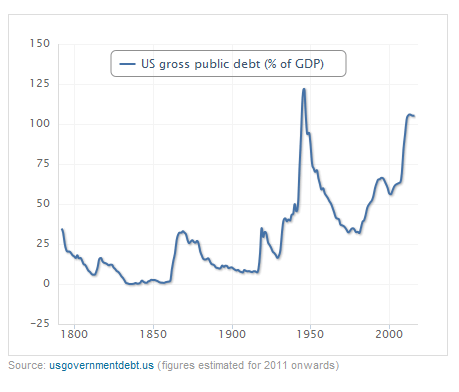The political drama for raising the US debt ceiling continues for many days now. From a Bloomberg news report:
President Barack Obama, pressing congressional leaders for a multi trillion-dollar agreement in deficit-cutting talks “running out of time,” dismissed a plan that House Republicans will promote as not “serious.”
As negotiators near an Aug. 2 deadline for raising the U.S. debt ceiling, the president is relying on the pulpit of news conferences to hold lawmakers to his challenge for a major deal. Yet time is working against leaders as talks carry into another week, with House Republicans planning to vote next week on legislation to limit spending and tie a $2.4 trillion increase in the debt ceiling to a constitutional amendment to balance the budget, a plan standing little chance in the Senate.
“The American people are not interested in the reality TV aspects of who said what and did somebody’s feelings get hurt,” Obama said at his second news conference of the week, after stalled talks at the White House. “They’re interested in solving the budget problem and the deficit and the debt.”
As the debate goes on between Democrats and Republicans on how to solve the gridlock on this issue, lets take quick look at the US debt from a historical perspective.
The chart below shows the US debt as a percentage of GDP since 1776:
Source: Smart Investor: The great American debt, CityWire UK
Some key points from the article:
- Debt as a proportion of GDP was about 35% in 1780, just after the US had fought off the British in the War of Independence.
- During the American Civil War the ratio of debt to GDP rose back to 35%.
- The ratio spiked to 35-40% at the time of the First World War.
- During the Second World War the debt reached the highest peak in history from less than 50% of GDP in 1939 to more than 120% in the mid-1940s.
- In 1980, the debt was around 35-40%.But it has skyrocketed back to over 100% of GDP since President Ronald Reagan, Bush Senior, Bush Junior and now Obama, have all run budget deficits to maintain growth.
- Compared to the above presidencies, under the reign of Bill Clinton the debt to GDP ratio actually fell.
While in the past, the US economy experienced expansion after the end of wars, in the current situation the economy is undergoing contraction since the U.S. is involved in multiple wars simultaneously with no end in sight.
On a related note, the Total Public Debt Outstanding stands at $14,342,953,885,641.98 as of July 14, 2011 according to U.S. Department of the Treasury.




